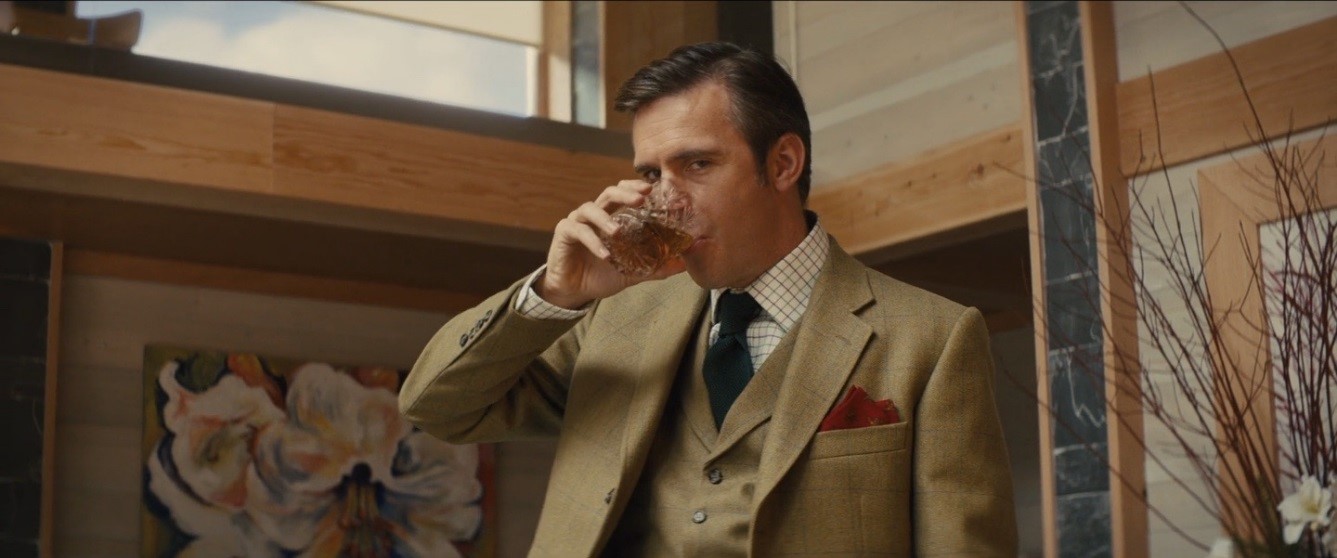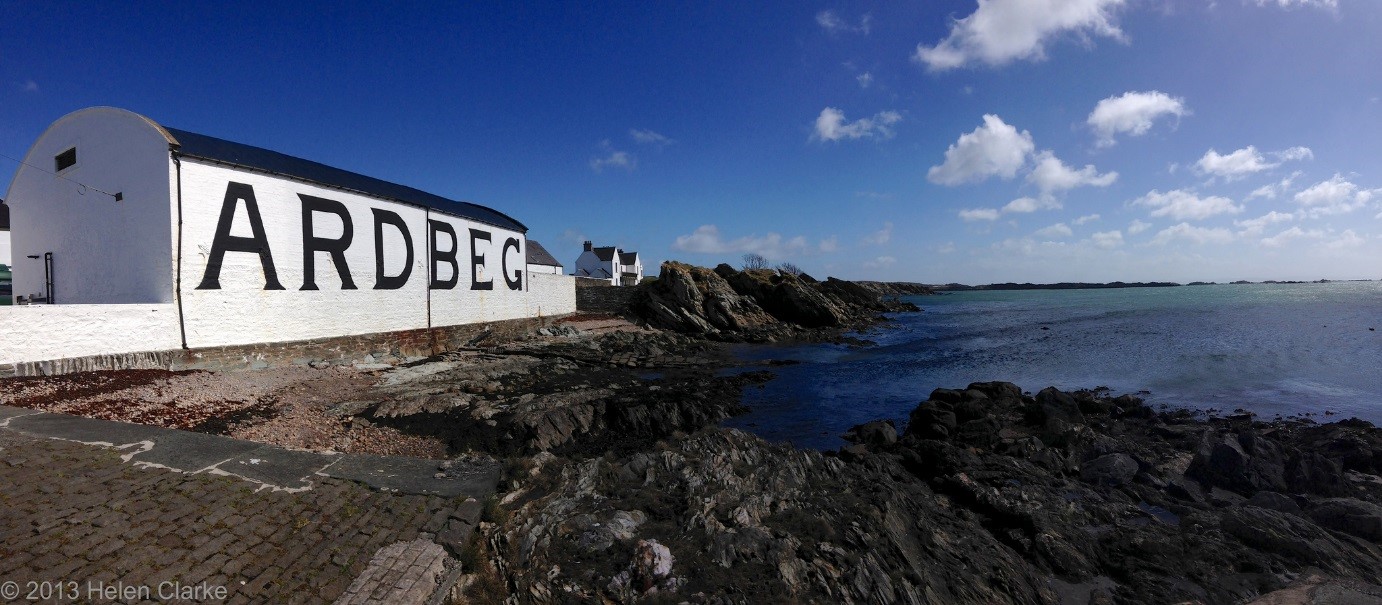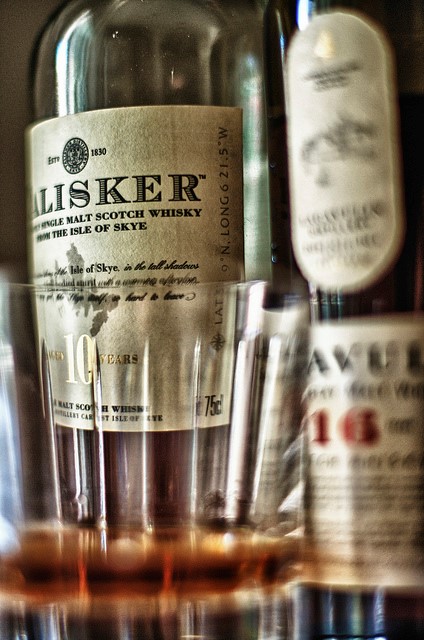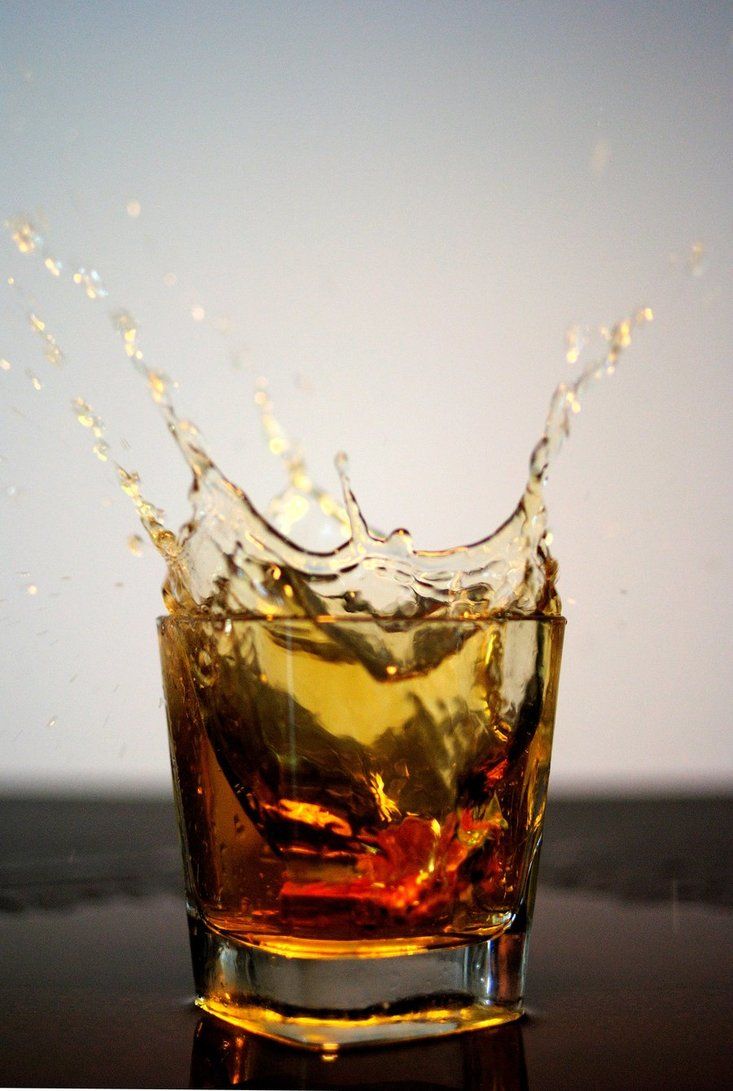In a movie, whenever a bottle of the ‘really good stuff’ is called for, it would likely be a bottle of whisky. Probably rare and exorbitantly expensive, and someone will probably remark on its age. Served up in a short tumbler glass with a few ice cubes, it might be downed in one go, prompting a grimace and then perhaps a remark on how fine it was. And then the action sequence can begin.

“It would be a sin to spill any.” A fine scotch whisky plays a part in this scene from the 2014 film Kingsman: The Secret Service. From www.scotchcinema.com.
The term ‘whisky’ can refer to quite a broad range of drinks. (In fact, the spelling of the word itself is a sticking point, depending exactly on where the drink comes from.) At its most general, a whisky is an alcoholic drink made by the distillation of a fermented grain mash.
The chances are, though, if one is talking about the ‘good stuff,’ one would be referring to a specific style of whisky made from malted barley and aged in oak barrels. It would also be made in Scotland: Scotch whisky, sometimes known simply as ‘scotch.’
Distillation, and the consumption of the alcoholic result, is an ancient practice of many civilizations. The Scottish relationship to whisky goes back hundreds of years, at least, with records from as early as the 15th century suggest that distilling was an established practice in the region. The next couple of centuries would also see taxation and legislation of the whisky industry, and a consequent rise of underground production. 1823 saw the passing of the Excise Act, which made fully above-board distilleries a more attractive option, and ushered in the whisky industry that we know today. Indeed, most of the distilleries that are operating today were founded in the 19th century (and are popular with and welcoming to tourists). Today, the production of whisky is codified in the Scotch Whisky Regulations 2009, which is aimed at preserving its authenticity.

The Ardbeg distillery, founded in 1815, and still operating today. From Flickr.
So, what goes into a whisky bottle? It starts at a distillery; a particular distillery will produce a whisky that is either a ‘single malt’ or a ‘single grain’—‘single’ because it comes from that distillery alone, and ‘malt’ or ‘grain’ denotes whether it was made with only malted barley or had other grains added to it. Single malt and single grain whiskies can be final products on their own, or two or more can be mixed to form a blended whisky.
Single malt whiskies are considered to be the flagship upper echelon of the whisky world. Their bottles invariably bear the names of their distilleries of origin and can be exotic appellations—Glenfiddich, Talisker, Glenmorangie, Ardbeg. The age of the whisky will also likely be prominently displayed.
To be clear, a single malt whisky is still a mixture. Whiskies are not generally taken straight from a cask and bottled (it does happen, but rarely, as a ‘single cask’) but are rather assembled—the technical term is ‘vatted’—from multiple casks from that distillery. The job of the Master Blender is to ensure that a particular whisky line stays consistent from year to year. This means that the age printed on the label is not the actual age of the whisky—instead, it refers to the minimum age of that particular combination, and in fact could consist of older whiskies.
The ‘good stuff’ is almost invariably a single malt, to be enjoyed neat, or perhaps with a splash of water. Anything further would be sacrilege. If you hear about a bottle of whisky being sold for over a hundred thousand pounds, it would probably be a single malt.

From Flickr.
And then you have the blended whiskies. They consist of the majority of whisky sales by far (up to 80 or 90 percent, even), and include household names such as Johnnie Walker, Chivas Regal, and Ballantine’s. The common perception is that these are inferior, attractive only because of their lower price point and usually end up mixed in a cocktail. This is not necessarily the case, however—after all, blends are made up of single malt and grain whiskies, and would only be as good (and as expensive) as its ingredients. It is a Master Blender who concocts this too, and with a blend he or she would have even more to work with. Great blends can be enjoyed the same as a single malt.
Single malts still maintain their air of superiority, however. Some of this is undoubtedly due to elitism and snobbery—which, we must concede, is an unavoidable aspect of a pastime such as this. Nothing says ‘I have more money than you’ than buying an obscenely expensive bottle off the shelf and draining it in a single night.
Of course, you could actually, you know, like drinking whisky. If you are up for a rich, complex, sophisticated drink rooted in history and tradition, and a palate that you are willing to mature, then perhaps scotch whisky is for you.
And besides, partaking in a little bit of snobbery can be fun. Perhaps one day you might find yourself unusually sharply dressed, in an establishment full of warm mahogany and rich leather. You could approach the bar, and confidently order a 30-year single malt. You could sip it, give a little half-smile of restrained appreciation and exhale: “I say, sir. That is damn good stuff.” Who wouldn’t want to be prepared for that?
Until next time,


